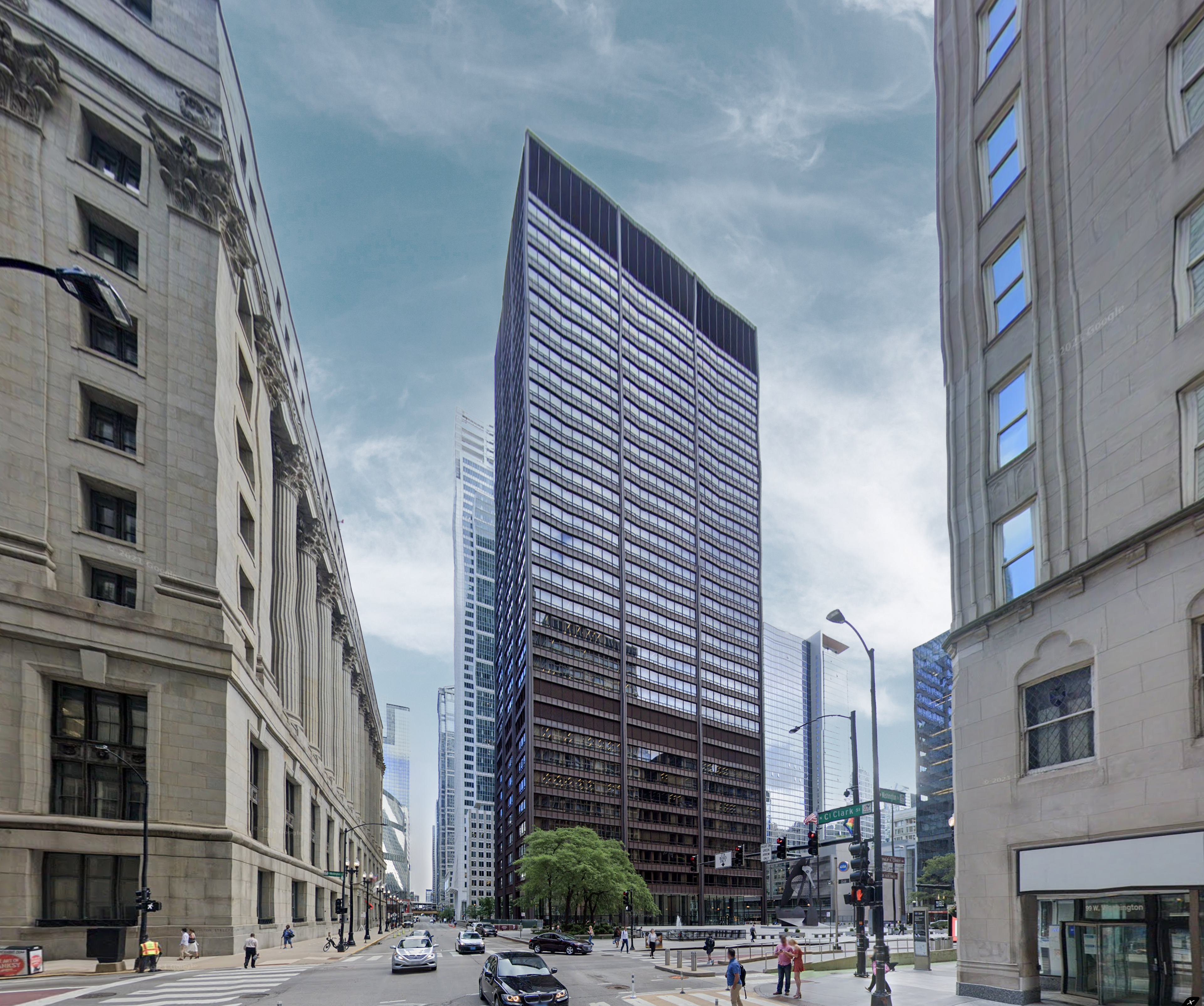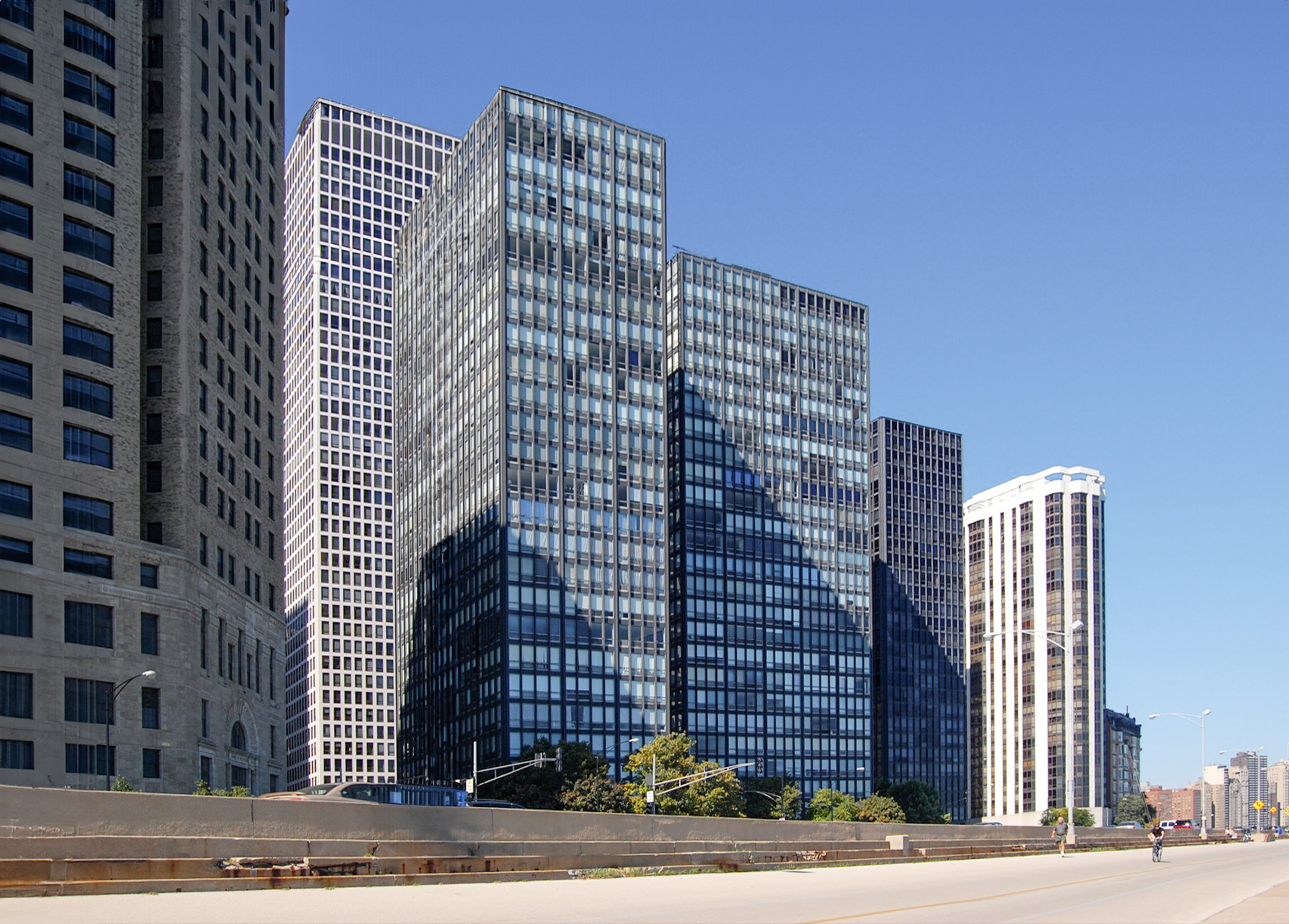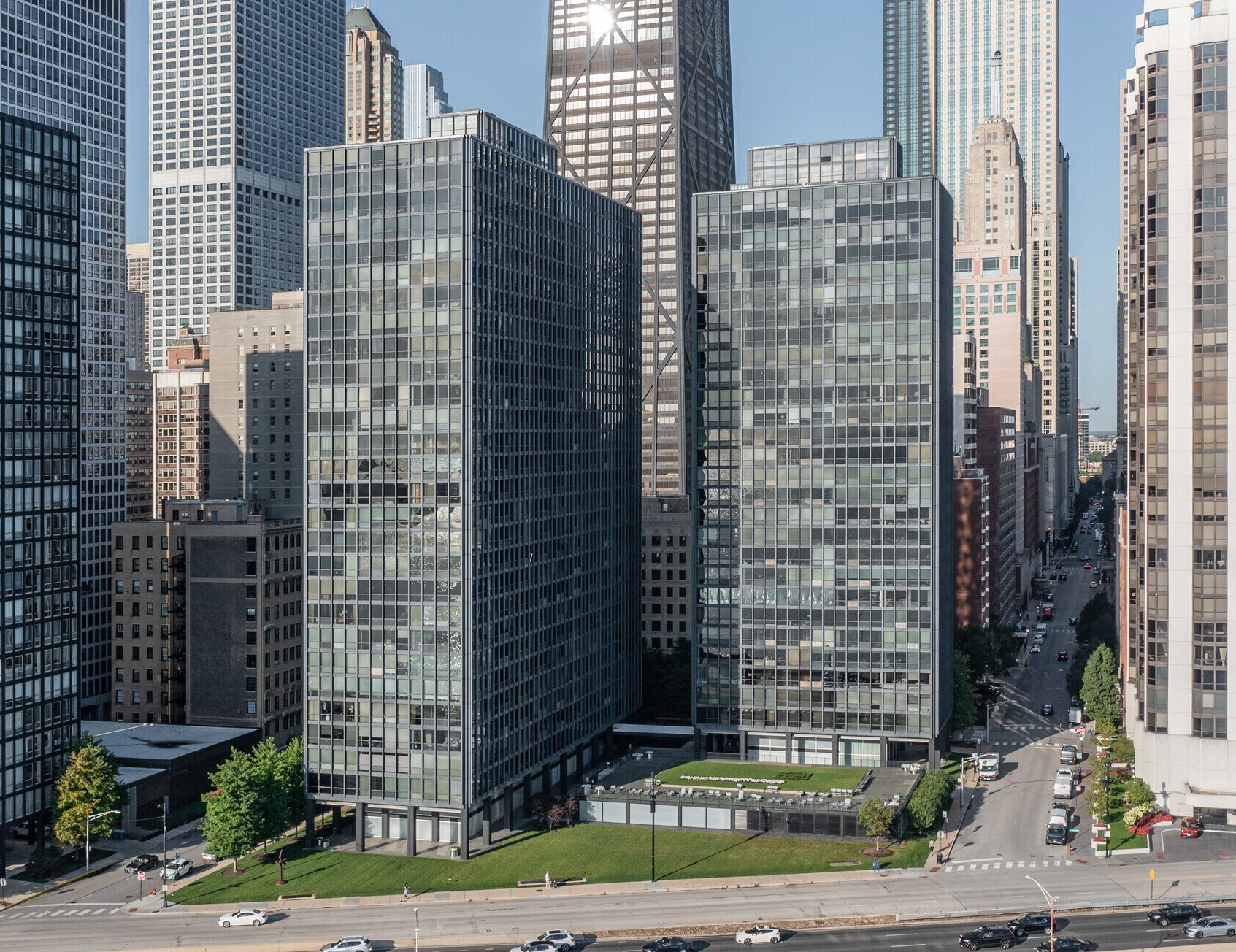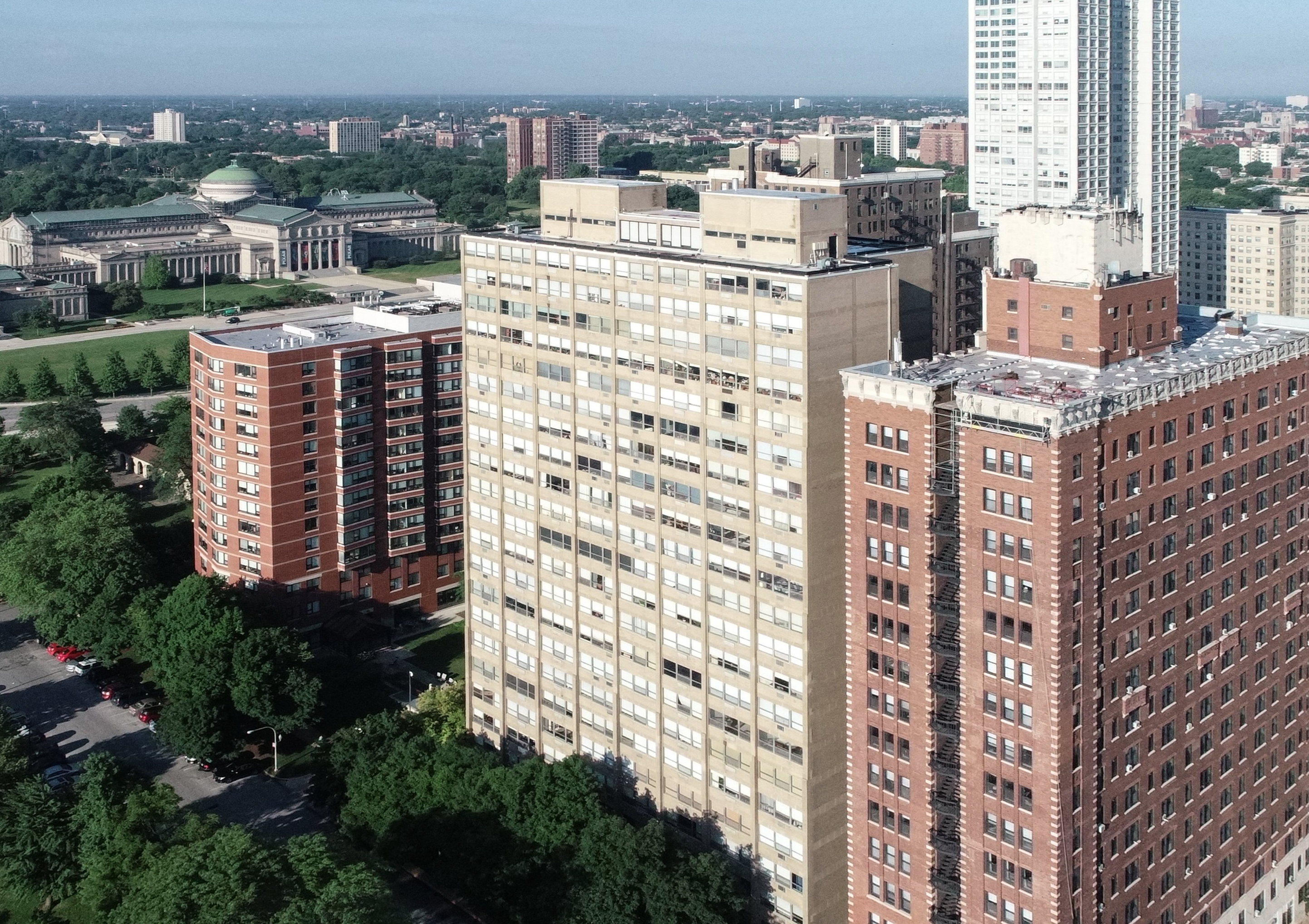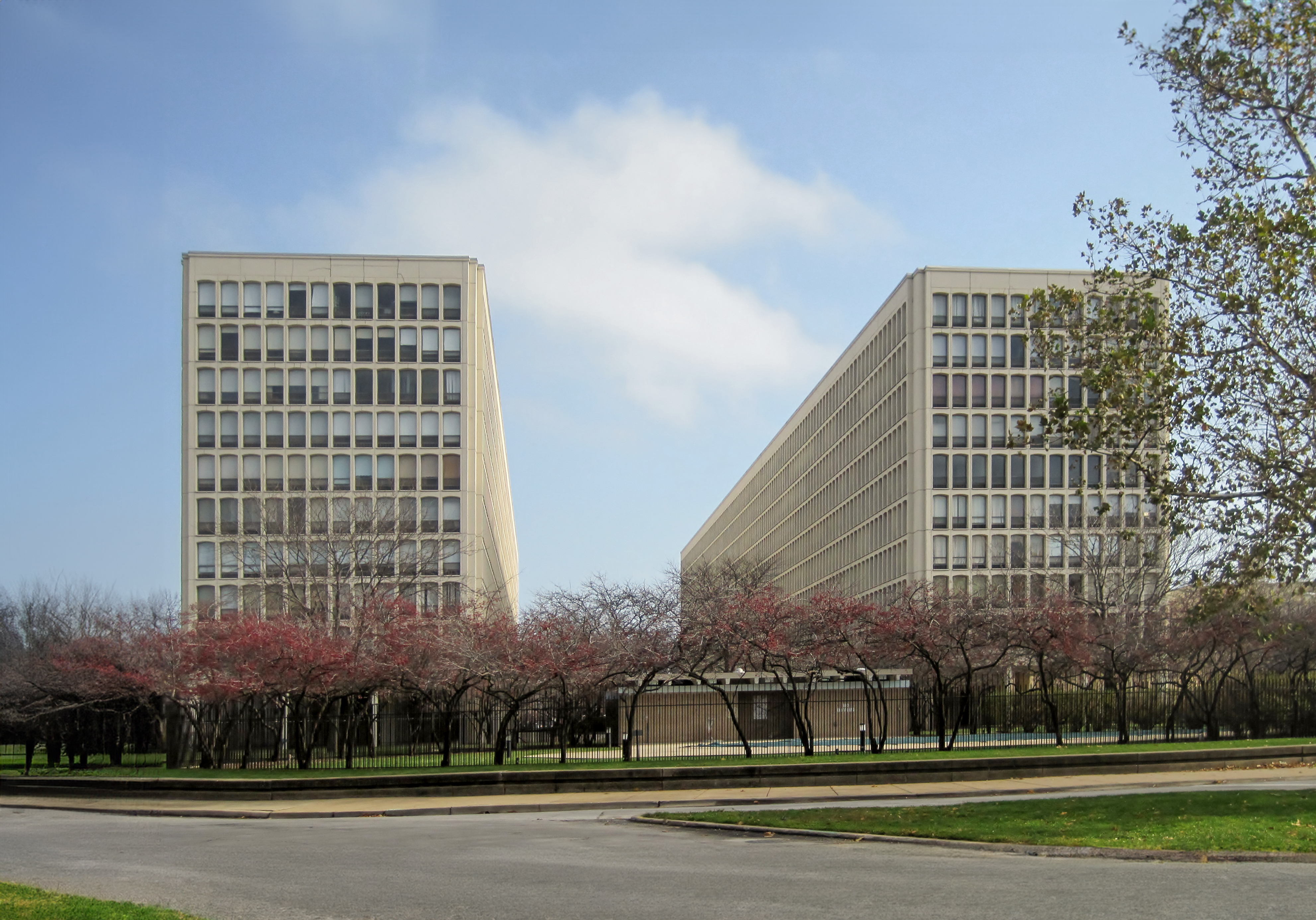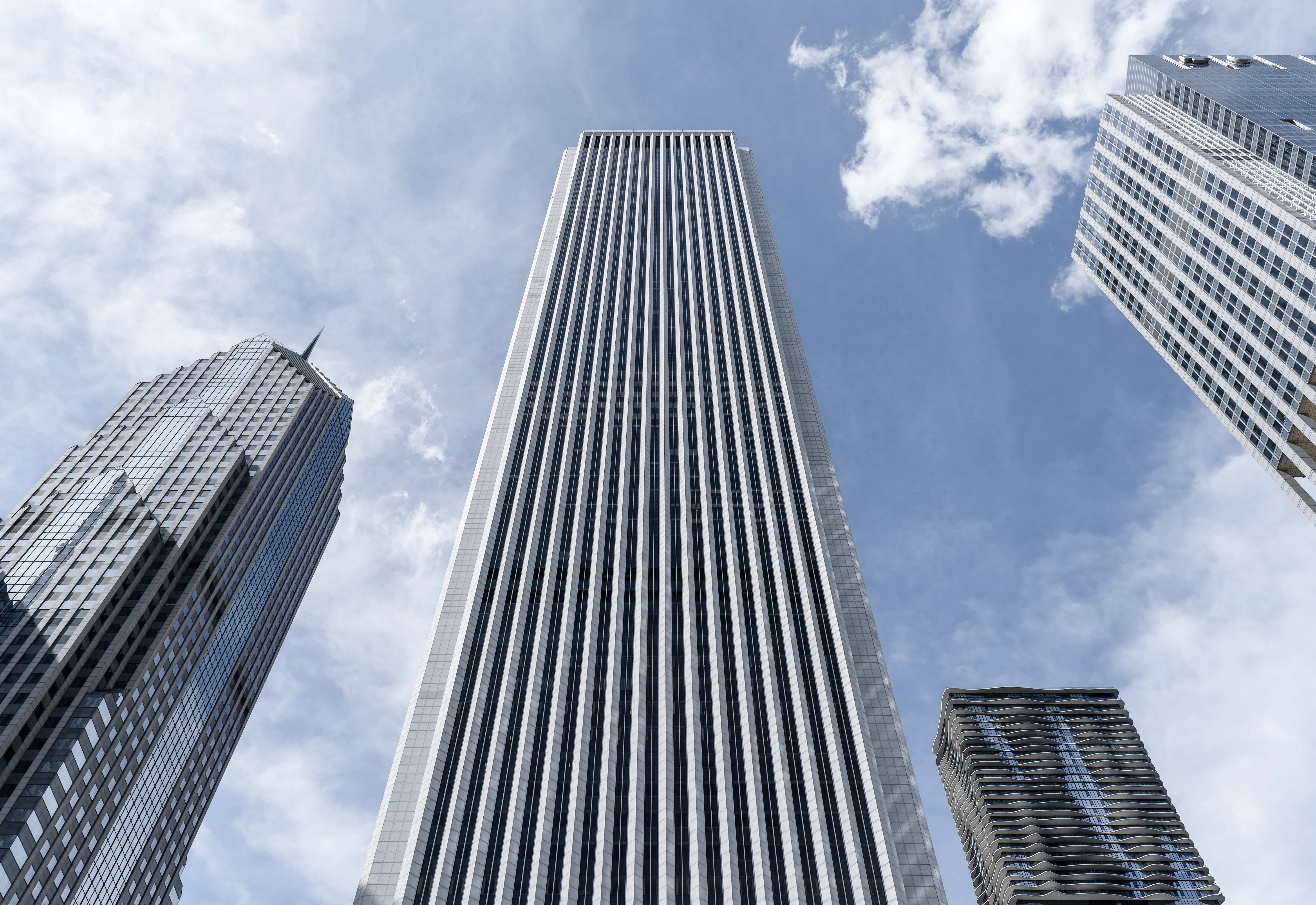The Richard J. Daley Center is an International Style skyscraper designed by C.F. Murphy Associates, with Jacques Browson as lead architect, in association with Loebl, Schlossman & Bennett, and Skidmore, Owings & Merill, and built between 1963 and 1965, for a reported $87.0 million dollars, in Chicago, IL.
Richard J. Daley Center is not the only name you might know this building by though. It is common for companies to want to attach their names to iconic buildings when they move in, or for the general public to come up with nicknames, and this one is no exception. The building has changed names several times over the years, and is also known as:
- Daley Plaza.
- Chicago Civic Center between 1965 and 1976.
- Richard J. Daley Center from 1976 until this day.
Its precise street address is 55 West Randolph Street, Chicago, IL. You can also find it on the map here.
All the architecture firms invovled in this project were heavily influences by the teachings of Mies van der Rohe, and therefore it comes as no surprise that the building follows many of the solutions that Mies's skyscrapers did, some of which are literally just a couple blocks away.
The plaza at the north end of which the building stands provides public spaces for various events and features an untitled sculpture by Pablo Picasso, known as "The Picasso".
